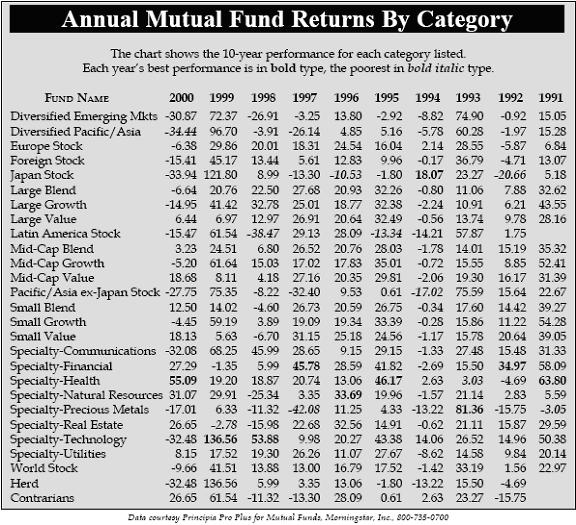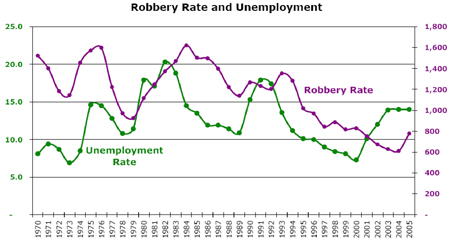While stock market performance can be very cyclical, investors still expect to receive positive returns over the long term. When the next market downturn comes, how will you respond?
Last month, the S&P 500 Index passed its previous closing record, set in March 2000. The S&P 500 dropped a total of 49 percent from that original peak to its trough in October 2002. Investors who sold at the market bottom because they couldn’t handle watching their portfolios shrink are now kicking themselves, and their portfolios may never recover from this ill-timed decision.
Investors took various lessons from that three-year bear market. Some are worth remembering the next time there’s a downturn. Others should be ignored.
Diversification is crucial. Absolutely. Almost all major indices (a notable exception would be the NASDAQ) outperformed the S&P 500 cumulatively over the past seven years. Outperforming asset classes include domestic small-cap stocks, international stocks, real estate investment trusts, emerging market stocks, bonds, money market funds, hedge funds, private equity and many more. In a diversified portfolio, some investments are bound to do well while others underperform. Sufficient diversification leads to an optimal portfolio, with the greatest level of expected return and the lowest level of risk.
A formal selling strategy is very important. Yes, but it should not involve market timing. Some people advocate selling after a 10 percent drop or a 20 percent drop in value, which is basically a form of market timing. But any plan like this is flawed, because you might look back later and realize you sold at the absolute bottom. An investor needs to maintain her conviction that the market will recover, because recoveries usually happen when they are least expected. Two good reasons for selling stocks include rebalancing your portfolio to its target asset allocation (for example, selling outperforming stocks and buying underperforming bonds or cash equivalents), or gradually reducing your exposure to stocks as you get closer to retirement. Neither of these reasons should be influenced by panic or the market’s recent underperformance.
Stocks are too risky and volatile. Wrong. While the 49 percent drop we experienced was very difficult to endure, it was also very rare. Two periods of similar or greater market declines occurred in the post-World War I United States, a 48 percent drop in the S&P 500 Index from 1973 to 1974, and a market drop of more than 80 percent during the Great Depression. The market recovered both times, and it is doing the same this time. Stocks should have a place in everyone’s long-term portfolio. While investors must be able to handle drops of this magnitude, they shouldn’t expect to deal with them more than once every few decades.
Hedge funds are always better than stocks. Wrong again. Hedge funds have emerged from relative obscurity and now attract major inflows. Estimates vary, but hedge fund managers oversee more than $1 trillion. While a great deal of this money comes from large institutions such as pension funds and endowments, smaller mom and pop investors also have been shoveling money into hedge funds, attracted by their positive returns during the 2000-2002 bear market.
While hedge funds pursue numerous strategies, each with its own risk/return characteristics, most funds seek to provide positive returns regardless of the state of the stock market or economy, with low volatility. While low volatility makes for a smoother ride over the short term, a hedge fund investor is likely to end up with a lower long-term return than that of an index fund. For example, the Hedge Fund Research Inc. Fund of Funds Diversified Total Return Index provided an annualized return of 9.89 percent from its inception in 1990 through 2006. This return is nothing to scoff at, but it is lower than the 11.57 percent annualized return, including dividends, generated by the S&P 500 Index during the same period. So while hedge funds will outperform during short-term market downturns, over the long term they should lag stocks.
Indexing is dead. No way. Two flawed arguments about indexing are being made as a result of the bear market. First, some argue that this period proved that active money management is better than passive index funds. After all, active managers were able to beat their index benchmarks by holding cash instead of stocks. However, the long-term returns of S&P 500 Index funds still hold up quite well when compared with the competition. For example, through April 30, 2007, the 10- and 15-year returns of the Vanguard 500 Index Fund – Admiral Class Shares rank in the top 35 percent of the Morningstar large-cap blend category. Shareholders should be pleased when their fund finishes at least in the top half of the category, and should be even happier when it beats over 65 percent of the competition.
The second argument is that there are better ways to construct stock indices than the market cap weighting method used by Standard and Poor’s (see “A Fundamentally Better Stock Index?” in the January 2007 issue of Sentinel). New indices to track markets or industries have been created that weight stocks based on more objective measures, such as dividends or profits. While these “fundamental” indices may outperform a similar market cap weighted index periodically, they do not provide what a typical index fund should be expected to: exposure to the entire market. Over the long term, a market cap weighted index such as the S&P 500 should provide lower risk than a domestic large company fundamentally weighted index, thanks to greater diversification.
The market cycle of 2000-2007 reinforces what smart investing is all about. Common investment mantras such as “don’t buy high and sell low” and “don’t put all your eggs in one basket” sound easy enough, but many investors panicked and sold their holdings at the market bottom in 2002, and have held low-risk investments since. By developing a long-term investment plan and following it regardless of market fluctuations, you give yourself the best chance to achieve your financial goals.









